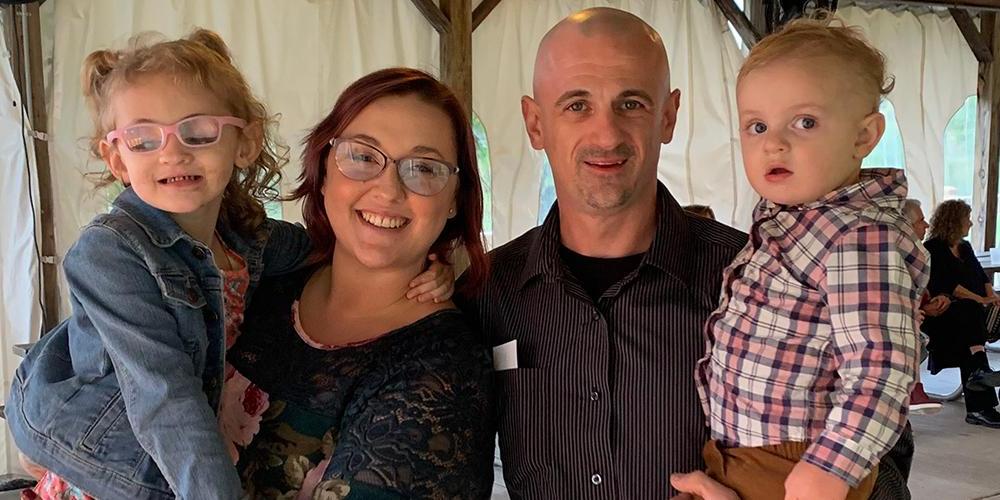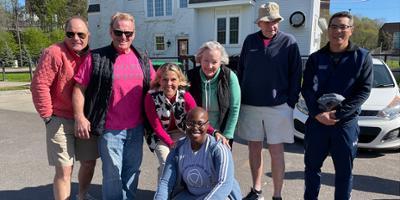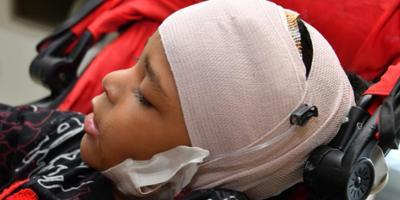Helping Natalie see
Pediatric vision care team treats youngster’s cataracts, glaucoma
BY CHARLES McCHESNEY
Natalie Baumgartner’s mother, Ryan Earl, remembers the day her daughter smiled at a brightly colored book. “I remember just being overjoyed.” Until that moment, it wasn’t clear that her daughter would ever be able to see.
 Preethi Ganapathy, MD, PhD
Preethi Ganapathy, MD, PhDNatalie was born with cataracts covering extremely small eyes. Additionally, she had a cleft palate, affecting the top of her mouth. “Her eyes were very cloudy,” said Earl. On the second morning of her life, doctors at the hospital where she was born tested her, and they could not see any reflection from the back of her eyes.
The conditions required near-immediate intervention, and so, a few days after birth, Natalie met Upstate’s Stephen Merriam, MD, who would operate on her eyes when she was 6 weeks old and who, six years later, continues to care for her vision.
Merriam was a familiar name to Natalie’s family. When Earl was born, she had cataracts in both eyes, and one of her eyes was small. She was cared for and operated on by Walter Merriam, MD, the father of Stephen Merriam. Both men are part of the Upstate Center for Vision Care.
Before her first birthday, Natalie’s cleft palate was operated on by Sherard Tatum, MD, at the Upstate Cleft and Craniofacial Center, down the hall from the Upstate Center for Vision Care.
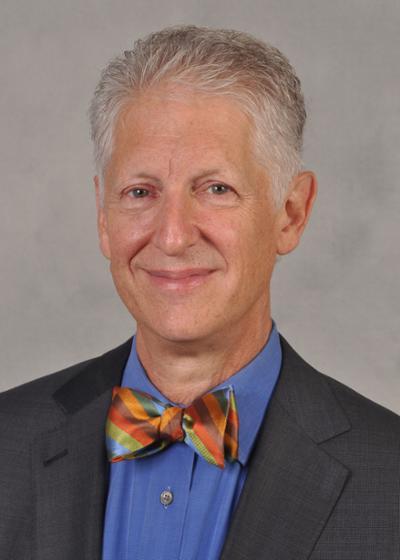 Robert Fechtner, MD
Robert Fechtner, MDNatalie also developed glaucoma, an excess of pressure within the eye that permanently damages the optic nerve, and has been seen regularly by Stephen Merriam, as well as Upstate ophthalmologists Preethi Ganapathy, MD, PhD, and Robert Fechtner, MD, chair of ophthalmology and visual sciences.
“It’s wonderful that Natalie had such skillful and consistent pediatric care from the beginning. With pediatric cataracts and pediatric glaucoma, time is one of the most important factors that determines how these eyes will do,” said Ganapathy. “The earlier we catch glaucoma, the earlier we can treat it, which translates into better chances for the child to keep meaningful long-term vision.”
The Center for Vision Care at Upstate has assembled a team of ophthalmologists to care for the most complex pediatric eye problems. The center’s specialists work as a team to bring state-of-the-art medical and surgical solutions that previously were only available in major cities. “For Natalie, experts in pediatric cataracts, glaucoma and cleft palate have given her the opportunity to overcome these challenges and have a rich and full childhood,” said Fechtner.
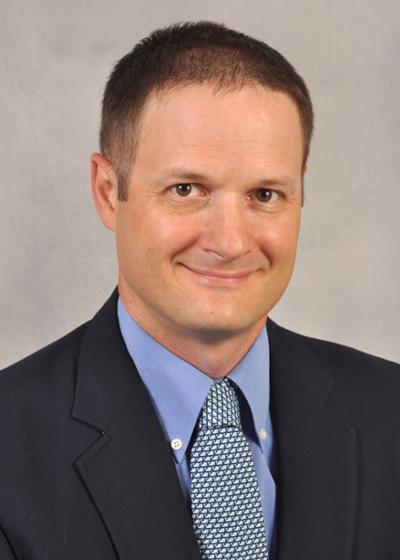 Stephen Merriam, MD
Stephen Merriam, MDFor months after her birth, it was unclear whether Natalie could or ever would see. “She kept her eyes closed a lot,” Earl recalled, and she did not react to her parents’ smiling faces. During one visit, Earl remembers Natalie’s father, Patrick Baumgartner, asking Stephen Merriam, “Just tell me she’ll see – she’ll see something.”
Stephen Merriam could make no promises. Her eyes were so small, maybe 40 percent smaller than one might expect. It wasn’t certain. “We were trying to prepare ourselves for essentially a blind child,” Earl said.
Much of Natalie’s earliest days are a fog to her mother. Still, “everything was so quick.” Something that stuck with her was the struggle to care for Natalie’s eyes. She and Patrick had to work as a team to put contacts in Natalie’s eyes. The task had to be performed every eight days, because the gas-permeable lenses had to be switched out regularly. Natalie reacted as any infant might, loudly and strenuously. One parent would have to hold Natalie tightly while the other changed out the contacts. “We were overwhelmed,” she said of herself and Patrick, “we’d hug each other.”
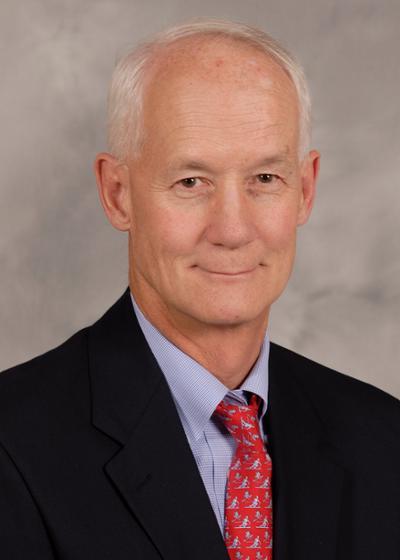 Walter Merriam, MD
Walter Merriam, MDThen, around the time she was 5 months old, Natalie made what appeared to be eye contact with her mother. Later came the reaction when the colorful book was put in front of her.
“She’s the sweetest kid,” Stephen Merriam said of Natalie. “She has done well with what she has.” He explained that Natalie is considered “low vision” and registered as legally blind. Her continuing eye-pressure issues have required multiple operations, and he says Natalie will be a “lifelong eye patient.” She also has annual visits to the Upstate Cleft and Cranial Center.
Natalie’s vision suffered a setback in April when the retina in her right eye became detached due to glaucoma. Surgery to reattach the retina was not successful. “Ultimately, Natalie only sees out of her left eye now, which appears healthy, and she is still monitored by all the same doctors,” Earl said. “She continues to adapt and thrive, and always amazes us despite any challenges she faces!”
Natalie is now a pupil at Beaver River Central School in Castorland, about an hour and a half northeast of Syracuse. “She’s very smart,” her mother said. She recalled Natalie talking at 10 months and walking at 15 or 16 months.
 Sherard Tatum, MD
Sherard Tatum, MDWith the help of glasses — which she started wearing at 8 months, sparing her parents from having to keep changing out contacts — Natalie can see well enough to watch movies, though she has to be very close to the TV, and enjoys YouTube videos, such as “Ryan’s World.” Three years ago, she welcomed a little brother, Damon Baumgartner, to the family.
“She loves to be challenged,” her mother said. She is careful in getting around. Her limited vision makes it difficult for her to perceive changes in heights but enjoys riding her tricycle and climbing the monkey bars at school. “She’s sassy,” her mother declared with a laugh. “She has come so far.”
“Patrick and I are grateful to all of Natalie’s doctors and all they have done for her over the years,” Earl said. “All of Natalie’s continued successes are a direct result from the care they have provided her, and
we couldn’t be more thankful!”
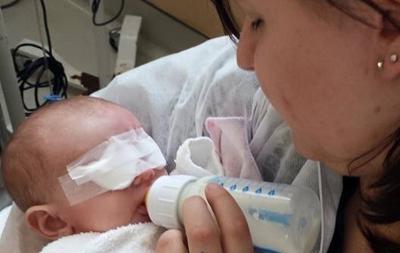 Natalie’s mother feeds her after the operation. (provided photo)
Natalie’s mother feeds her after the operation. (provided photo)“The Center for Vision Care at Upstate is here to serve our community. In addition to our full-time faculty, we are fortunate to have top ophthalmologists from our community volunteer their time to provide expert care for nearly every eye problem in children and adults,” said Fechtner. “In addition to the clinical expertise, we have an internationally recognized group of scientists at the Center for Vision Research studying the basic mechanisms of vision and the eye. Their leading-edge research is producing discoveries that may, someday, prevent blindness and restore vision.”
The Center for Vision Care, celebrating its 25th year of service, provides a wide variety of eye-care services, from comprehensive eye exams to complex ophthalmic microsurgery.
This article appears in the spring 2023 issue of Upstate Health magazine.

